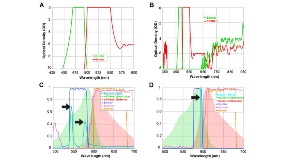

Find educational information to optimize and innovate your optofluidic pathway. Use the left hand navigation to filter by product category and by media type.
Filter Resources By:
Product Category
Media Type
Deselect All-
RazorEdge Filter Layout
By IDEX Health & ScienceIn many high-performance Raman systems with microscopic imaging capabilities or highly sensitive remote probes it is desirable for the excitation laser beam and the Raman-shifted signal light to share a common light path. Illustrations in this tech note describe the two layouts and the ideal filters for each system. Learn More
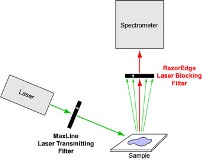
-
Filter Packaging
By IDEX Health & ScienceSemrock uses individual PET-G packaging for standard-size catalog filters. This packaging allows Semrock to keep the parts cleaner, reduce potential defects caused by shipping & handling, and utilizes 100% recyclable PET materials. Learn More
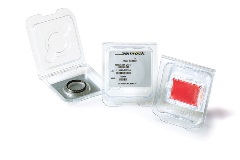
-
Edge Filters vs. Notch Filters for Raman Instrumentation
By IDEX Health & ScienceThe RazorEdge edge filters and the StopLine notch filter are both available with OD>6 blocking of the laser line. Should you use an edge filter or a notch filter to block the laser line in your Raman system? Learn more. Learn More
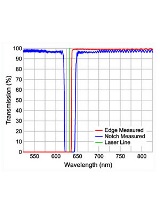
-
Selecting the Appropriate Mirror for your System
By IDEX Health & ScienceHigh-performance optical mirrors are a key component to most system designs. From bench-top setups to high-end lab instrumentation, mirrors can enable a reduced system footprint, combine multiple sources, help to form images, or other purposes. This article provides a high-level, basic overview of some of the key specification parameters to consider when selecting the appropriate mirror for your optical system. Learn More

-
Optics Basics and Types of Optical Filters
By IDEX Health & ScienceSharpen your optical filter knowledge with our 12-part lecture series on filters. Presented by Turan Erdogan, PhD, these lectures were a part of a day-long group presentation. Learn More
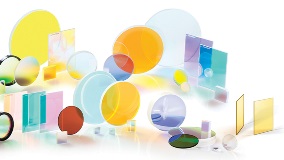
-
KolaDeep™ Spectral Measurement System: Measure Deeper Blocking
By IDEX Health & ScienceThe Kola Deep spectral measurement system brings Optical Density (OD) theory into measurement reality. Our engineers developed a proprietary new system that allows for proven measurement of the steepest and deepest spectral features of Semrock-brand Optical Filters, ensuring your instrument will deliver best-in-class sensitivity. Learn More
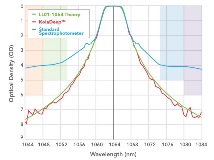
-
Laser-based Imaging: What you need to know
By IDEX Health & ScienceDue to many desirable properties like high brightness, stability, longevity and narrow spectral bandwidth, lasers are replacing conventional broadband light sources for fluorescence imaging applications. Not only have these features of lasers allowed for higher-sensitivity visualization and enhanced throughput in imaging applications, but also several other unique properties of lasers—narrow beam divergence, high degree of spatial and temporal coherence, and well-defined polarization properties—have enabled new fluorescence imaging techniques. At the same time, the use of lasers as fluorescence light sources imposes new constraints on imaging systems and their components. Learn More
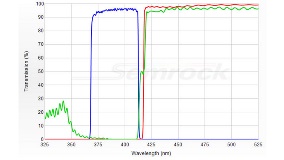
-
Group Delay Dispersion – What it is and why ultrafast laser applications care about it?
By IDEX Health & ScienceThe term Group Delay in optics is the relative amount of time light of different frequencies is delayed as it travels through a transmitting medium (like an optic made of glass) or it rattles around inside the many layers of a thin-film coating. At some frequencies (or wavelengths), it takes light longer to emerge from the medium or thin-film coating than at other frequencies. Learn More
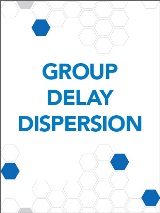
-
How to achieve high blocking by combining filters
By IDEX Health & ScienceIt is possible to increase blocking by combining two or more filters together. However, with modern high-performance filters that block light by reflection, one should not try to increase blocking merely by stacking two filters immediately next to one another—combining filters this way only works when multiple reflections between the filters are reduced or eliminated! Learn More
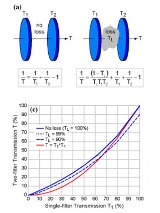
-
Build Your Own Fluorescence Filter Set
By IDEX Health & ScienceDespite the availability of “standard filter sets” (a combination of optimally designed exciter, dichroic and emitter filters) offered by optical filter manufacturers, it is not uncommon for researchers to build their own “custom filter sets” comprised of unique combinations of otherwise standard individual filters. Explore common pitfalls and key considerations when building custom optical filter sets. Learn More
